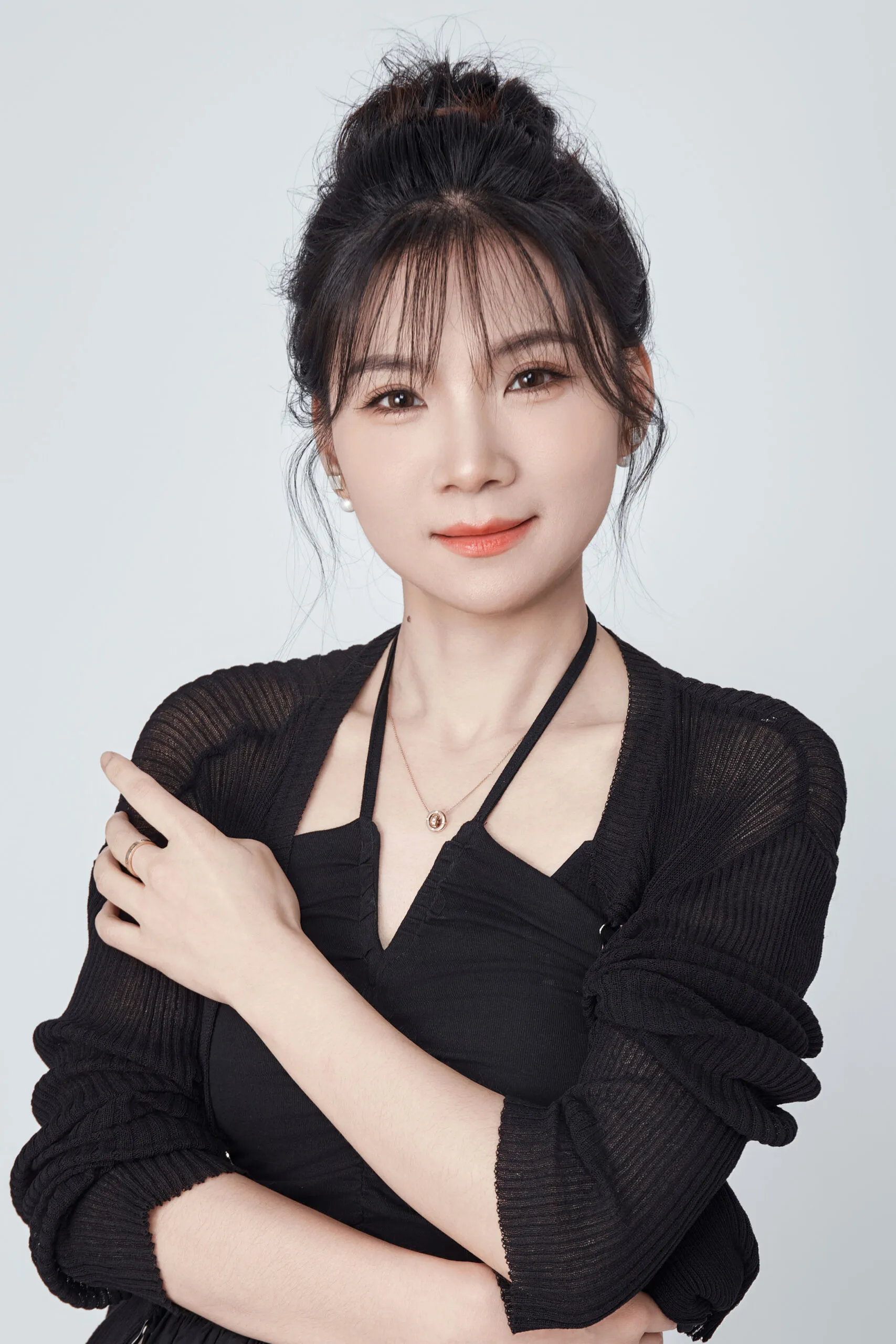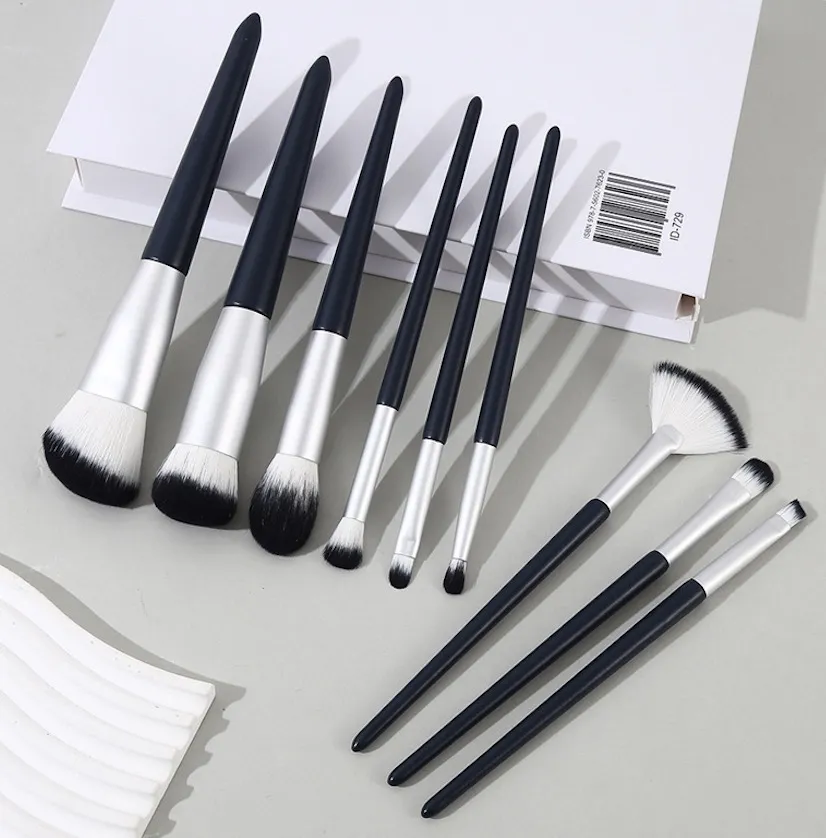Choosing the right brush hair feels overwhelming. Make the wrong choice, and you risk poor performance and wasted investment. I’ll help you match the right hair to your product.
The best animal hair depends on the use case. Goat hair1 is a versatile workhorse for powder pickup. Blue squirrel is the softest for sheer finishing. Kolinsky offers precision for eyes and lips. Pony and horse hair add resilience for buffing denser powders.
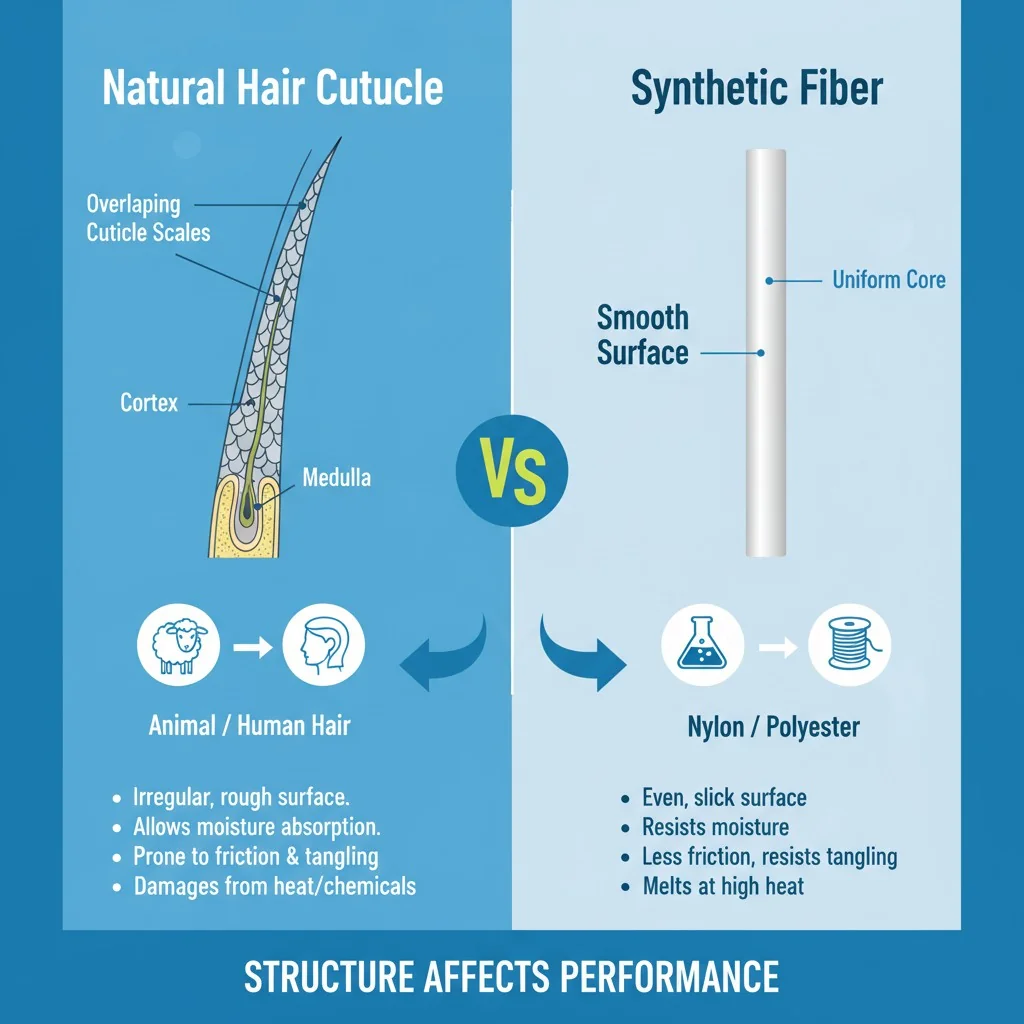
Now that you have the quick answer, you’re probably wondering why these hairs perform so differently. As a brand founder, understanding the details of material science is what separates a good product line from a great one. It’s the secret to creating tools that your customers will love and use for years. Let’s break down the factors that truly matter for performance, cost, and your brand’s story.
All natural hair brushes are cruelty-free.False
The term 'cruelty-free' typically refers to products not tested on animals. Hair sourcing methods vary, and brands should seek third-party certifications like Leaping Bunny to validate claims, as the hair collection process itself can be debated.
The microscopic cuticles on natural hair fibers are what allow them to pick up and distribute powder effectively.True
Unlike smooth synthetic fibers, natural hairs have a textured surface with scale-like cuticles that grip fine powder particles and release them gradually for a blended, non-patchy application.
Animal Hair vs. Synthetic: What Actually Changes Powder Pickup, Payoff, and Feel?
Stuck between choosing natural or synthetic bristles? This decision impacts everything from product performance to your brand’s ethical message, and getting it wrong can be a costly mistake.
Natural hair has microscopic cuticles that grip powder for a soft, diffused finish. Smooth Synthetic fibers2 don’t absorb product, making them ideal for creams and liquids. Your choice depends on the makeup formula you’re pairing it with and your brand’s core values.
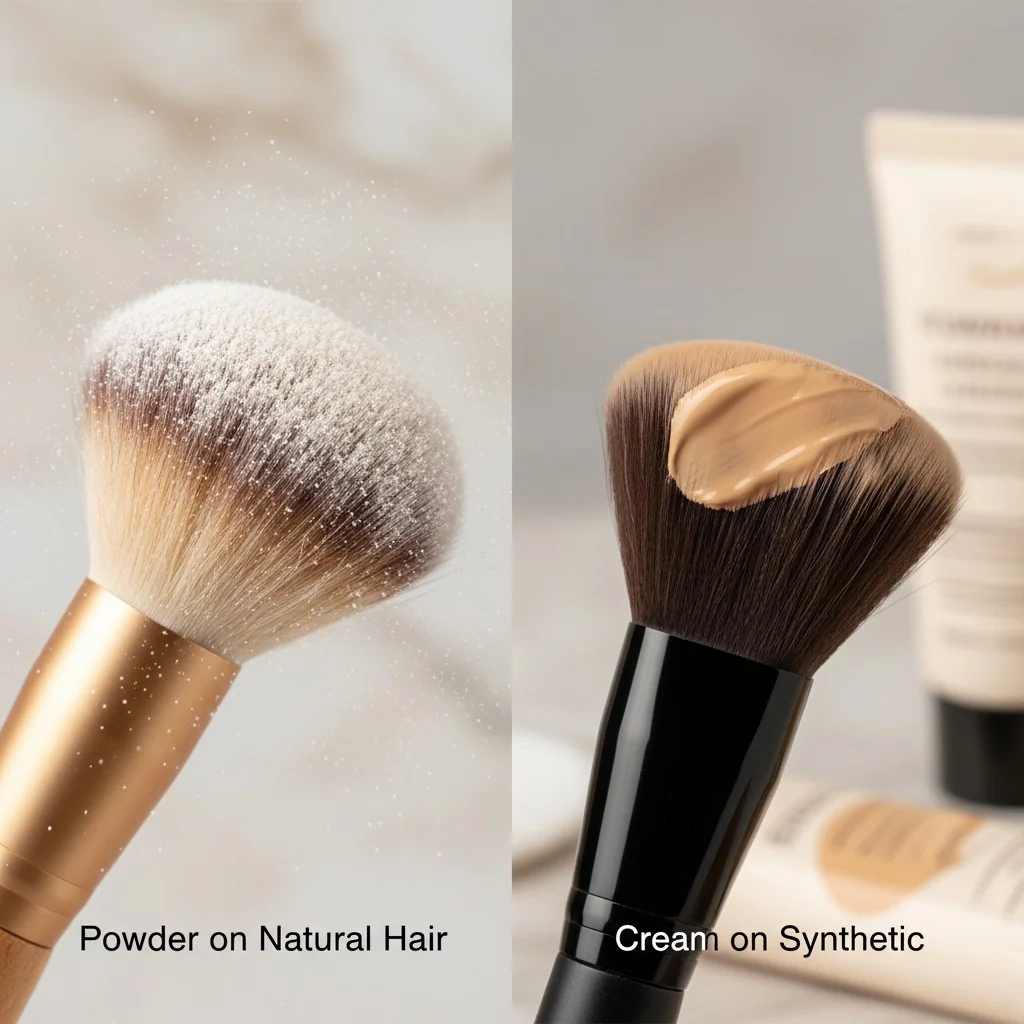
When I first started working on the factory floor, the most important lesson I learned was about the hair itself. It’s not just about softness; it’s about function. The performance difference comes down to three key things.
The Cuticle and Its Job
Natural animal hair has a textured surface covered in tiny, overlapping scales called cuticles. Think of them as little hands that grab onto powder products. This structure allows the brush to pick up a good amount of powder and then release it evenly as you sweep it across the skin. It’s why natural hair is amazing for blending and creating a soft-focus, airbrushed look. Synthetics, on the other hand, are smooth plastic fibers (usually PBT or Taklon). They have no cuticles, so they don’t trap product. This makes them perfect for liquids and creams because the makeup sits on the surface of the bristles, leading to less waste and a more direct application.
Spring, Taper, and the User Experience
Natural hairs have a "belly" and a fine, tapered tip. This gives them a unique "spring" or resilience. They bend with pressure but snap back into shape. This quality, combined with the soft tip, provides a luxurious feel and controlled application. High-end synthetics are getting much better at mimicking this, but the organic structure of natural hair still provides a unique performance for powders that many artists and connoisseurs prefer.
The Rise of Vegan and Ethical Lines
The market doesn’t lie. Consumers, especially in the US and EU, are actively searching for vegan and cruelty-free options. The demand for vegan brushes is projected to grow by over 5.6% annually. Because of this, many brands I work with now run dual lines: a premium, natural hair collection for powder enthusiasts and a high-performance vegan line for creams, liquids, and ethically-focused customers. This strategy allows you to capture both markets without compromise.
Synthetic brushes are always cheaper than natural hair brushes.False
While basic synthetic fibers are inexpensive, high-performance, technologically advanced synthetics designed to mimic natural hair can be as costly, or even more expensive, than some mid-grade natural hairs.
Hakuhodo, a renowned brush maker, confirms that goat hair is ideal for multi-purpose powder application, while squirrel hair is best for ultra-soft, sheer finishes.True
Industry experts and legacy manufacturers like Hakuhodo define functional roles based on the physical properties of each hair type, establishing a widely accepted standard for brush performance.
Goat vs. Squirrel vs. Kolinsky: Which Hair is Right for Face Powders, Finishing, and Detail Work?
You see the names on supplier sheets—goat, squirrel, kolinsky—but what do they actually mean for performance? Using the wrong hair can lead to a patchy blush or imprecise eyeliner.
Use goat hair for all-purpose powder products like blush and bronzer. Choose ultra-soft squirrel for a sheer veil of finishing powder. Rely on weasel or kolinsky for its firm tip and control with creams and detailed eye work.
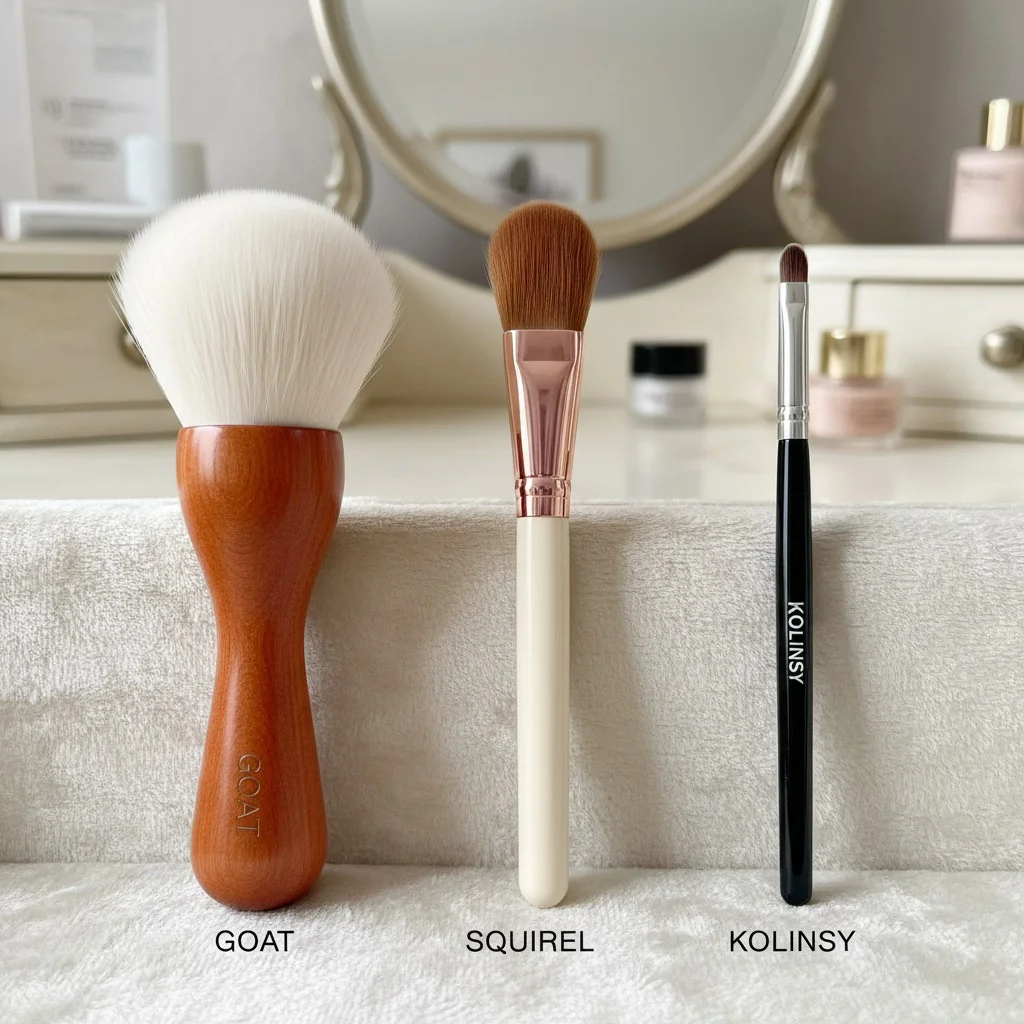
Matching the hair to the job is the most critical step in designing a brush. For my clients, I always start with the question: "What product will this brush be used with, and what finish do you want?" The answer determines everything. Here’s a simple breakdown I use with brand founders.
The Workhorse: Goat Hair
Goat hair is the most common and versatile natural hair in makeup brushes for a reason. It has excellent spring and durability, and its cuticles provide fantastic pickup and payoff for powders. It’s strong enough to be used daily and washed frequently. This makes it the perfect choice for everyday workhorse brushes like those for setting powder, blush, and bronzer. Higher grades, like Sokoho or Saikoho, are softer and feel more luxurious on the skin while maintaining that great performance.
The Luxury Finisher: Squirrel Hair
When softness is your top priority, nothing beats Squirrel hair3. Blue and Kazan squirrel hairs are incredibly fine and silky, making them ideal for sensitive skin. They have less spring than goat hair and their cuticles are smoother, so they pick up less product. This isn’t a flaw; it’s a feature. This property makes squirrel brushes perfect for applying finishing powders, subtle highlighters, or highly pigmented blushes where you want a sheer, diffused veil of color without any risk of over-application.
The Precision Artist: Weasel/Kolinsky Hair
For detail work, you need control. Weasel and kolinsky (a species of Siberian weasel) provide exactly that. These hairs are known for their superb elasticity and a strong, fine point that snaps back to shape perfectly. This gives you incredible precision for tasks like drawing sharp eyeliner, defining lips, or placing eyeshadow exactly where you want it. They perform exceptionally well with not just powders, but also creams, gels, and liquids, making them a top choice for multi-formula detail brushes.
| Use Case | Best Hair | Why |
|---|---|---|
| Setting/finishing powders | Blue/Kazan squirrel | Ultra‑soft, sheer veil; gentle on sensitive skin |
| All‑purpose face powders/blush | Goat (Sokoho/Saikoho) | Strong pickup and spring; durable and versatile |
| Buffing dense powders | Pony/Horse or goat blends | Firmer resilience to polish and even texture |
| Precision eyes/lips; creams/gels | Weasel/Kolinsky | Elastic tip, control, great color placement |
| Vegan lines; creams/liquids | Synthetic (PBT/Taklon) | Smooth fibers; easy cleaning; cruelty‑free |
Squirrel hair is best for packing on glitter eyeshadow.False
Squirrel hair is too soft and delicate to effectively pick up and place dense or large particles like glitter. A firmer synthetic brush or a finger is better for that task.
Kolinsky hair's value comes from its fine tip and high elasticity, which allows for precise application of both cream and powder products.True
The unique combination of a strong, resilient 'belly' and a naturally sharp point makes kolinsky hair ideal for detail-oriented tasks where control is paramount.
Blends and Grades (XGF/ZGF, Sokoho): How Do Specifications Impact Cost, Softness, and Longevity?
You’re reviewing a quote and see confusing codes like "XGF" or "Sokoho." Ignoring these details can mean you’re overpaying for a brush that feels scratchy or sheds after one wash.
Grades like Sokoho or XGF indicate the quality and softness of the hair, with higher grades being softer, rarer, and more expensive. Blends combine different hairs (e.g., goat + squirrel) to fine-tune performance, feel, and cost.
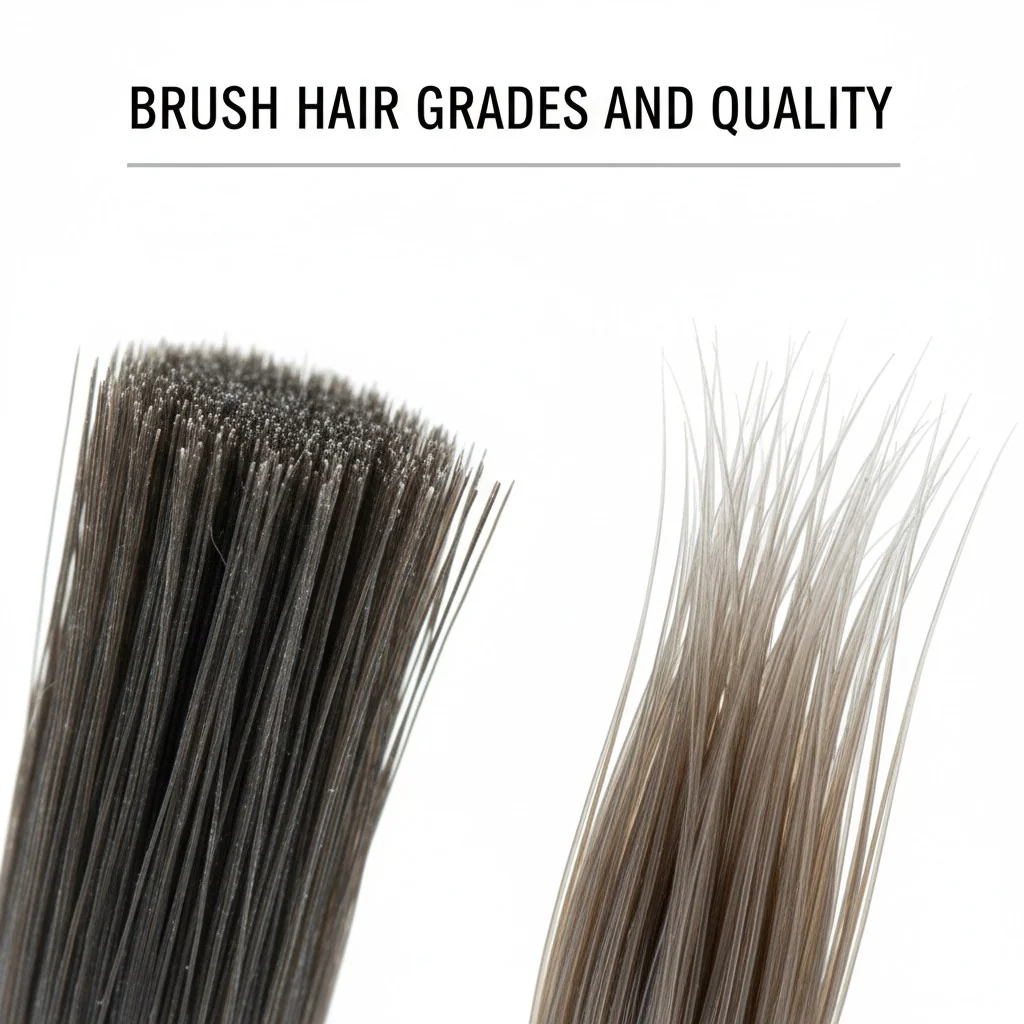
This is where my factory experience becomes so important for the brands I partner with. These codes aren’t just jargon; they are precise specifications that dictate the final quality and price of your brush. Getting this right is key to creating a product that feels premium.
Decoding the Grades
For goat hair, terms like Sokoho, Saikoho, and Saibikoho refer to the specific part of the animal the hair was collected from. Hairs from the neck and shoulder (like Saikoho) are finer, softer, and have a better taper than hair from the back. Other grading systems, like XGF or ZGF, also classify hair by softness, length, and straightness. The rule is simple: the higher the grade, the softer the feel, the better the performance, and the higher the cost. A key thing to specify is "first-cut" hair, which means the natural, tapered tip is intact. Blunt-cut hair feels prickly and delivers a patchy application.
The Smart Strategy of Blends
Pure, high-grade hair is expensive. That’s where blends come in. Blending is a smart manufacturing technique to achieve a desired performance at a specific price point. For example, I often suggest a goat and squirrel blend to clients. This gives you the great powder pickup of goat hair with the luxurious softness of squirrel, at a lower cost than pure squirrel. Another common blend is goat and high-performance synthetic. The synthetic fibers can help the brush hold its shape better after washing and can temper the goat hair’s pickup for a more flawless finish.
OEM Quality Checks You Must Do
When you receive samples, don’t just look at them. Feel them. Roll the brush head between your fingers to check for consistent density. Brush it firmly on your hand to check for shedding. Most importantly, look closely at the tips. Are they soft and tapered, or do they look blunt and feel scratchy? These are the quality control checks that prevent a bad bulk order. A reliable partner will ensure your approved sample is exactly what you get in production.
Sokoho is the highest and softest grade of goat hair available.False
While Sokoho is a high-quality grade, grades like Saikoho and Saibikoho are generally considered even softer and more luxurious, sourced from more specific and finer parts of the goat's coat.
Blending synthetic fibers with natural goat hair can help a brush maintain its shape better after washing.True
High-quality synthetic fibers have excellent 'shape memory' and are less prone to splaying than some natural hairs. Blending them in adds structure and durability to the brush head.
Compliance and Market Signals: What Do Cruelty-Free Growth, Certifications, and Regional Demand Mean for 2024–2025?
The market is clearly shifting. Customers are demanding "vegan" and "cruelty-free" products. If your brand ignores these signals, you risk being seen as outdated and losing a huge customer segment.
The vegan brush market is growing at over 5.6% CAGR, with the APAC region holding a major share. For US and EU markets, verifiable Cruelty-free certifications4 and sourcing transparency are no longer optional—they are essential for building brand trust.
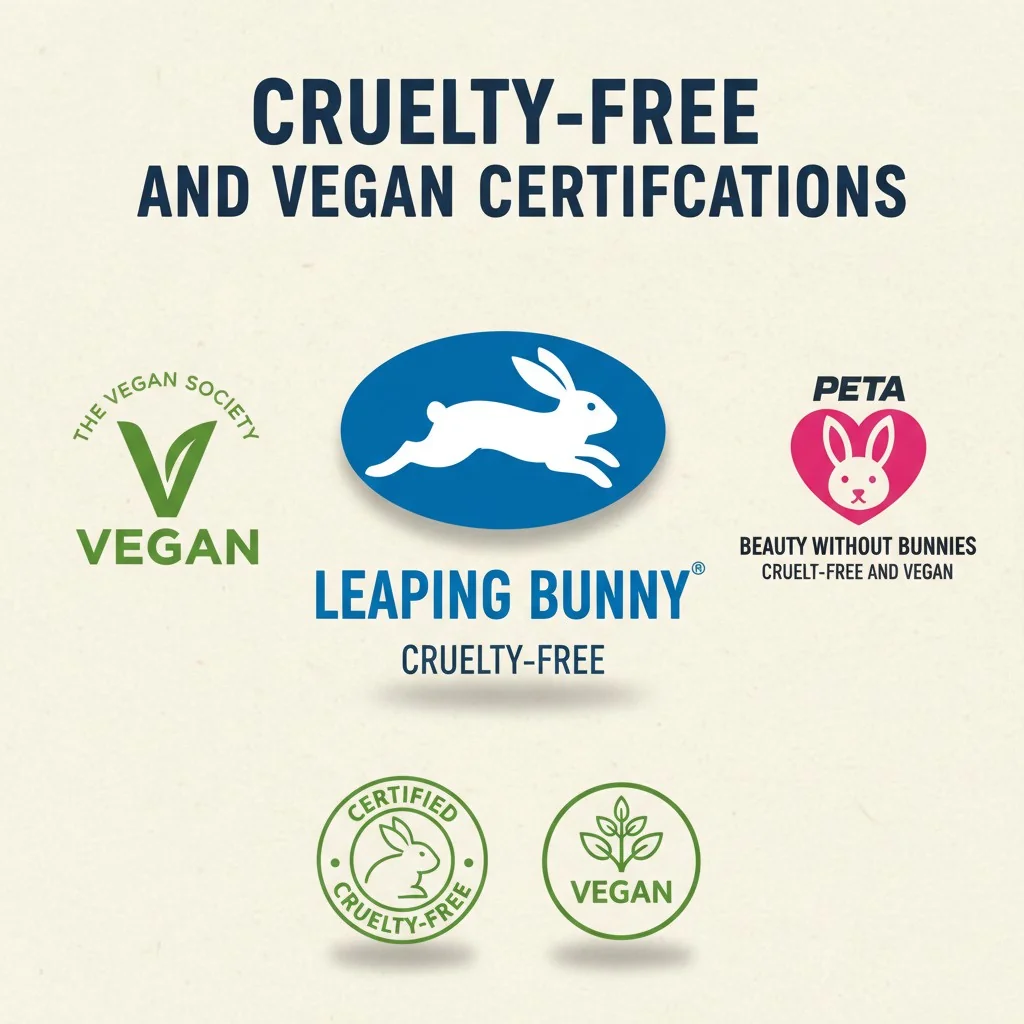
For brand founders like you, staying ahead of market trends isn’t just about marketing; it’s about product development and sourcing strategy. This is a topic I discuss daily with my clients who are targeting Western markets.
The Data-Backed Vegan Boom
This isn’t just a feeling; it’s a fact backed by numbers. The global vegan cosmetics market is exploding, and makeup brushes are a huge part of that. We see a projected CAGR of 5.6%–6.5% through 2030. And it’s not just a Western trend; the APAC region accounted for over a third of the market in 2023. I also watch Google Trends, which showed a massive spike for the term "Vegan makeup brushes5" in August 2025. This tells you that consumers are actively looking for these products, and timing your launch around these seasonal peaks can make a big difference.
Why Real Certifications Matter
One of the biggest pain points for brand founders is getting reliable documentation. It’s easy for a factory to say something is "cruelty-free," but customers are savvy. They look for official logos. That’s why aligning with third-party certifiers like Leaping Bunny or PETA is so powerful. It provides instant, verifiable trust. When you work with an OEM partner, you should ask them directly: "Can you provide the documentation I need to get certified?" A good partner will have their supply chain ready for this and help you through the process. It’s a non-negotiable for building a reputable brand today.
Regional Demands and Your Strategy
Your sourcing strategy should adapt to your target market. In the US and EU, transparency is king. Customers want to know where the hair comes from and how it was sourced. Clear labeling and a strong ethical story are part of your brand’s value. While some markets might still be more focused on price, the global trend toward conscious consumerism is undeniable. Offering a clearly labeled, high-performance vegan option is the safest and most forward-thinking strategy for any new beauty brand with global ambitions.
The Asia-Pacific (APAC) region has the smallest market share for vegan cosmetics.False
Contrary to this, market data from 2023 shows that the APAC region held the largest share of the vegan cosmetics market, at approximately 36.6%, indicating strong demand in the region.
A Google Trends spike for 'vegan makeup brushes' can indicate a good time to plan a product launch or marketing campaign.True
Spikes in search interest reflect heightened consumer demand and awareness. Aligning marketing efforts with these peaks can increase visibility and conversion rates for relevant products.
Conclusion
Choosing the right hair—natural, synthetic, or a blend—is a strategic decision. Match the fiber to the formula and your brand’s values to create tools that truly perform for your customers.
References
-
Goat hair is known for its versatility and excellent powder pickup, making it a popular choice for makeup brushes. ↩
-
Synthetic fibers are ideal for creams and liquids, offering easy cleaning and cruelty-free options. ↩
-
Squirrel hair offers ultra-softness and a sheer finish, ideal for sensitive skin and delicate applications. ↩
-
Cruelty-free certifications build trust with consumers, ensuring ethical sourcing and production practices. ↩
-
The demand for vegan makeup brushes is growing rapidly, reflecting consumer preferences for ethical products. ↩

